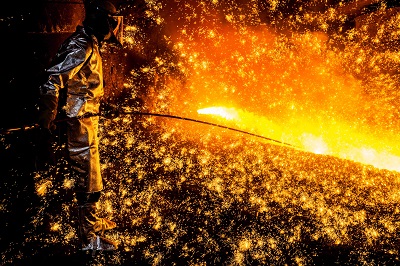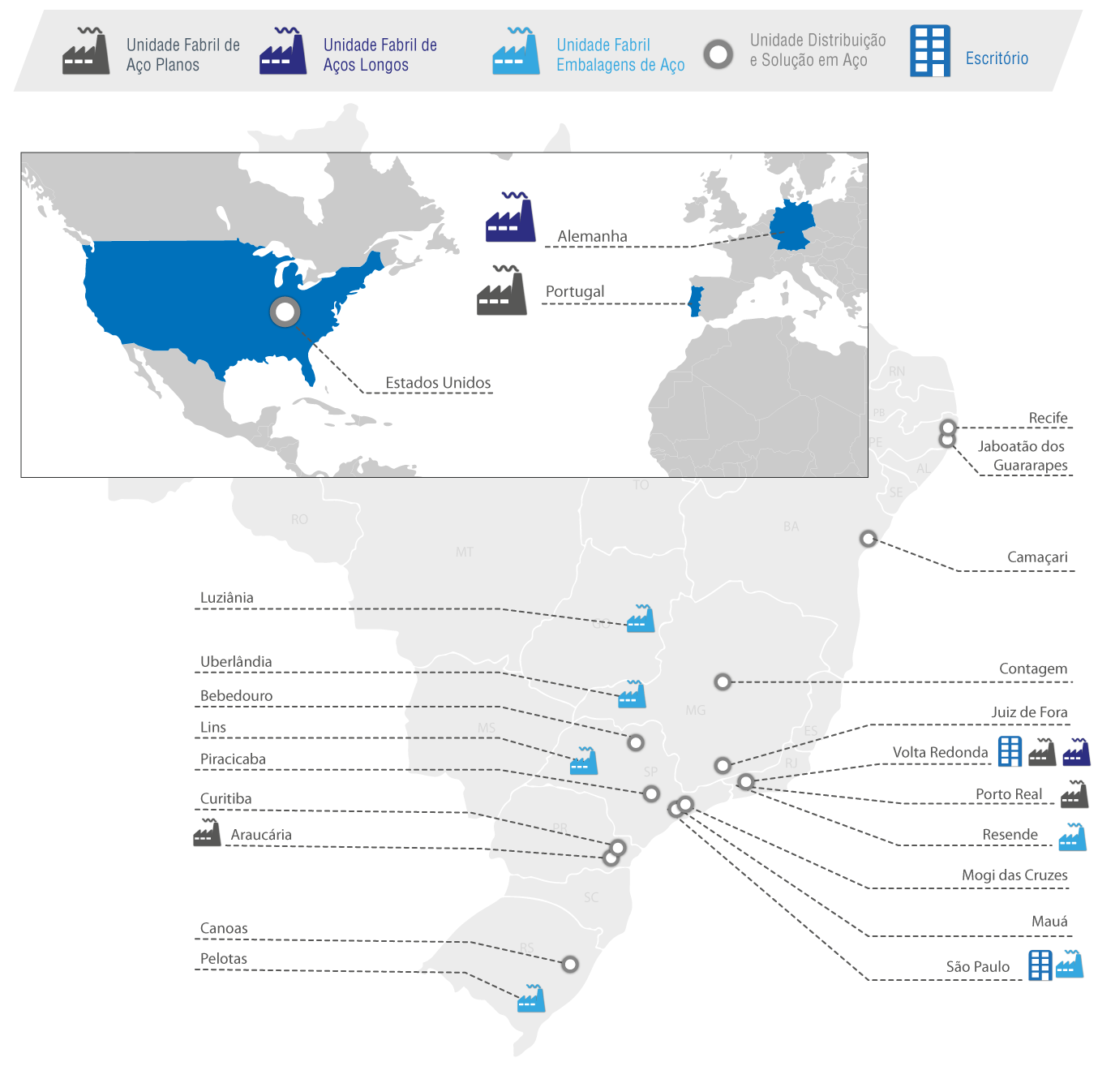Steel making


CSN operates across the entire steel production chain, from the extraction of iron ore to the production and sale of a diversified range of steel products including, but not limited to, coated sheets, Galvanized steel, pre-painted steel, metal sheets and long steel products (rebar and wire rod). The Company has units in Volta Redonda and Porto Real, both in the state of Rio; it also has a unit at Araucaria, in Paraná. Abroad, there are units in the United States (CSN LLC), Portugal (Lusosider) and Germany (SWT).
In addition, the company has a strong steel distributor, Prada Distribuição, and a unit specialized in packaging, Prada Embalagens (SP).
An integrated business model and quality management enable CSN to have one of the lowest production costs of the global steel industry.

Production Process – Flat and Long Steel
Flat steel
Long steel
Raw materials yard
The main raw materials are iron ore, extracted from Casa de Pedra mine, limestone and coal. From them, sinter, coke and pulverized coal are prepared. Another key raw material for the blast furnace supply is pellet, as a source of iron.
Blast furnance
The crude equipment that produces molten iron (pig iron), which then becomes refined steel. Pig iron is made by incineration of sinter, coke and pellet. A coproduct of the process is slag, which is a raw base material for cement.
Steel Plant
Process that transforms the pig iron into steel. The pig iron is drained from blast furnaces and is loaded in converters, where scrap will also be added to produce steel.
Pig iron refinement occurs by oxygen blowing to reduce the high levels of chemical elements.
- . . .
Casting
In the continuous casting stage, the molten steel is transformed into solid steel, forming thick strips. At the end of the process, the strips are cut into boards with the proper dimensions for rolling.
Rolling
The steel plate is passed between rolls that compress it. For this transformation, multiple rolling processes at high temperatures are required, followed by rolling at room temperature. The steps generate hot and cold rolled products, which are ready to be sold.
- . . . . . . .
Coating Application
A coating material may be applied to increase performance, oxidation and the lifespan of steel. The standards are: zinc (zinc), aluminum and zinc (Galvalume), zinc and iron (Galvanew), tin (tinplate) and chromium (chrome sheet). There is also the coil coating paint (pre-painted).
- . . . . . . . .
Packaging and Logistics
For sheet steel, the steel coil is packed for shipment to the customer through the chosen mode of transport. If necessary, it can be sliced and sent in the form of sheets or rolls. Rebars are packaged in bundles with defined weights and lengths. Coil rebars and wire rods are packed as a unit.
Eletric Steelmaking
The plant is composed of two main equipments: the electric arc furnace and the ladle furnace. In the electric furnace, recycled scrap steel and solid pig iron are melted together through the electrical current conducted by the electrodes to the metallic charge, producing molten steel, which is poured into a pan and transported to the ladle furnace, in which the chemical composition adjustments occur, originating the steel grade.
- . . .
Continuous Casting
Once the chemical composition of the steel in the ladle furnace is defined, it is transported to the continuous casting, where the molten steel passes through chilled molds and is solidified, originating the billets
Rolling Mill
At this stage the dowel/billet is heated up in the reheating furnace and subjected to plastic deformation in a sequence of rolling chairs, where the material section is reduced sequentially after each stand.
- . . . .
Bars and Rolls Line
In this step, the final gauge of the material, with its dimensional and mechanical characteristics, is set. The final product is packaged in straight bars or rolls.
- . . . . . . .
 Contraste
Contraste